Lesson Modules
Teaching Tips:
Engineering Design Principles with Cubelets, Design Thinking
Educator Pack Cubelets in the Classroom, 45-minute activity
For each class/group, this lesson plan includes 2 parts, 20 Minutes each:
- An introduction to basic concepts and vocabulary by engaging students in an “unplugged” thought‐based activity
- A hands‐on component using Cubelets to reinforce the concepts and vocabulary presented in part 1
This lesson plan is geared towards 4th ‐ 8th grade classes, though adjustments to vocabulary and descriptions, and providing more or less guidance allows teachers to use this with younger or older students. However, using these ideas, instructors, science centers, club leaders, and classroom teachers are invited to recast this material to work for other settings.
Introduce the class to Engineering Principles for the day:
Often Engineers need to consider who will use the solutions they make and design. If the problem was “what should we have for dinner” and the solution was “a salad with chicken, almonds, and cucumbers” it wouldn’t be a good solution if the people eating the dinner were allergic to nuts. The end user is who’s going to eat the dinner, and this solution doesn’t work for them. In the design phase of engineering we will:
- Define what the problem is
- Propose solutions to build, keeping in mind any constraints or user requirements
- Ask, “Is it successful” by looking at who is using it, and how it’s being used
We’ll consider how different users might use the same thing differently, or might need different solutions altogether. We’ll also consider how designing solutions should take into account who will use the solution, and how they will use it. Today our job as engineers is thinking about designing our solutions to solve more than one problem. We’ll have to ask who we’re helping, what to make, but also consider if we can anticipate how this design will be used over time ‐ will it need to change and adjust? Will it respect constraints and be used as intended? Let’s think more about this.”

Part 1: Understanding Design Thinking
Materials: Read through and present examples from //www.inspirationgreen.com/plasticbottleschools.html

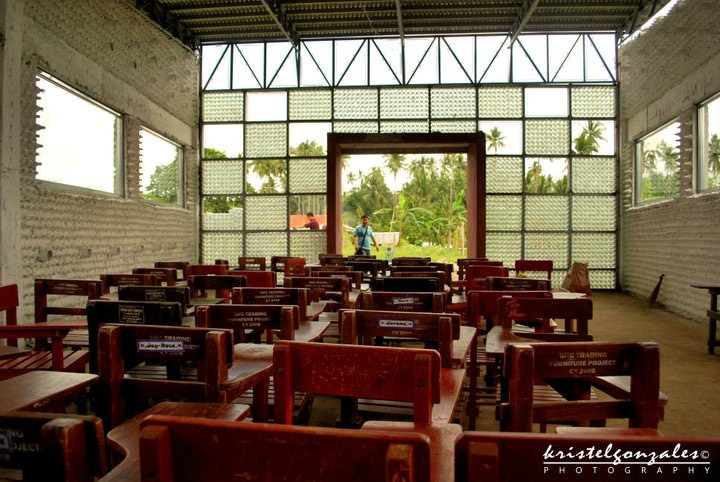
We use the Bottle School example as a starting place for students to think about users’ different needs and user‐experiences and resultant different requirements for what makes a design a success.
"Welcome back, Engineers!
Today we’re going to talk about how engineers can design devices, processes, robots, spaceships, biological and chemical substances, bridges, buildings, and much more but must always keep in mind how people will use them. Making good solutions means starting and ending your design by considering who the end‐user will be, and what their needs are. Let’s practice this by thinking through an example of innovative building design ‐ building a special school with and for those who will use it.”
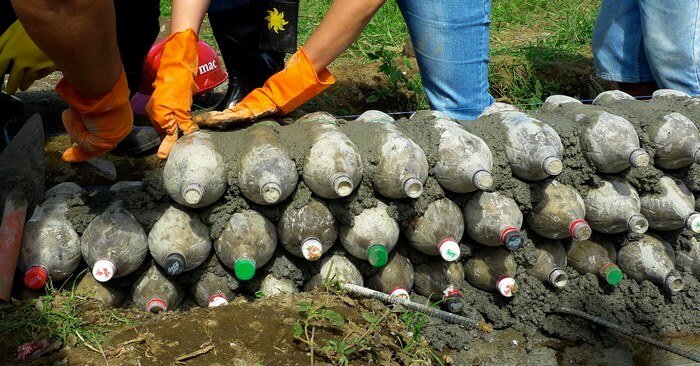
“In the Philippines, there is a shortage of schools. Pepsi organized a team of engineers and local volunteers to build this school. You might be interested to know what it’s made out of ‐ can you see? Soda Bottles! Many Soda bottles were collected, filled with clay, fitted, and cemented together to make the walls of this school. Let’s look at the pictures and discuss these questions:
- What problem or problems are being solved by building this structure?
- What might engineers contribute to making this school in a way that will last? What kinds of expertise were needed to come up with the right solution?
- If we took the school apart, what components will we find? What innovative ways did engineers use materials to construct components for this solution?
Finally, let’s explore another part of the story. Bottle schools were also built in Guatemala . . . Let’s think again about how designing and building a solution like this with an end‐user or group of users in mind involves all the parts of Engineering we’ve already practiced, now also keeping in mind ‘Who will use this? What do we need to know about how they will use it to design for their needs?"
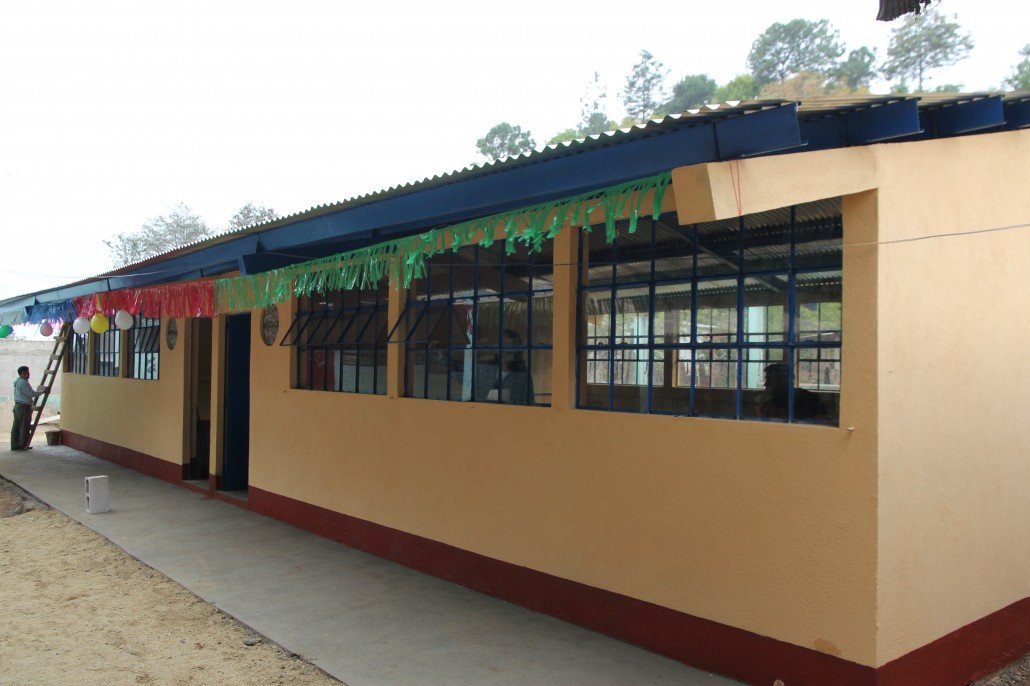
When engineers used the Bottle Schools in the Philippines as a model, how might they have needed to change the solution to work better in Guatemala? What would they need to know about the location, constraints, environment, and users?
Let’s think through these questions:
- What is the problem ‐ Is the problem or need different in the Philippines than in Guatemala? Does this account for how their solutions are slightly different? How would their plans need to be different?
- Propose solutions, keeping in mind any constraints or user requirements ‐ What different user requirements might there be in Guatemala? Who will use this (students, but also teachers and communities) What do we need to think of? (temperature/climate, sustainability, etc. )
- Success Criteria ‐ check design success by looking at who is using it, and how it’s being used. What would you want to know about the users in order to make sure the solution was successful?
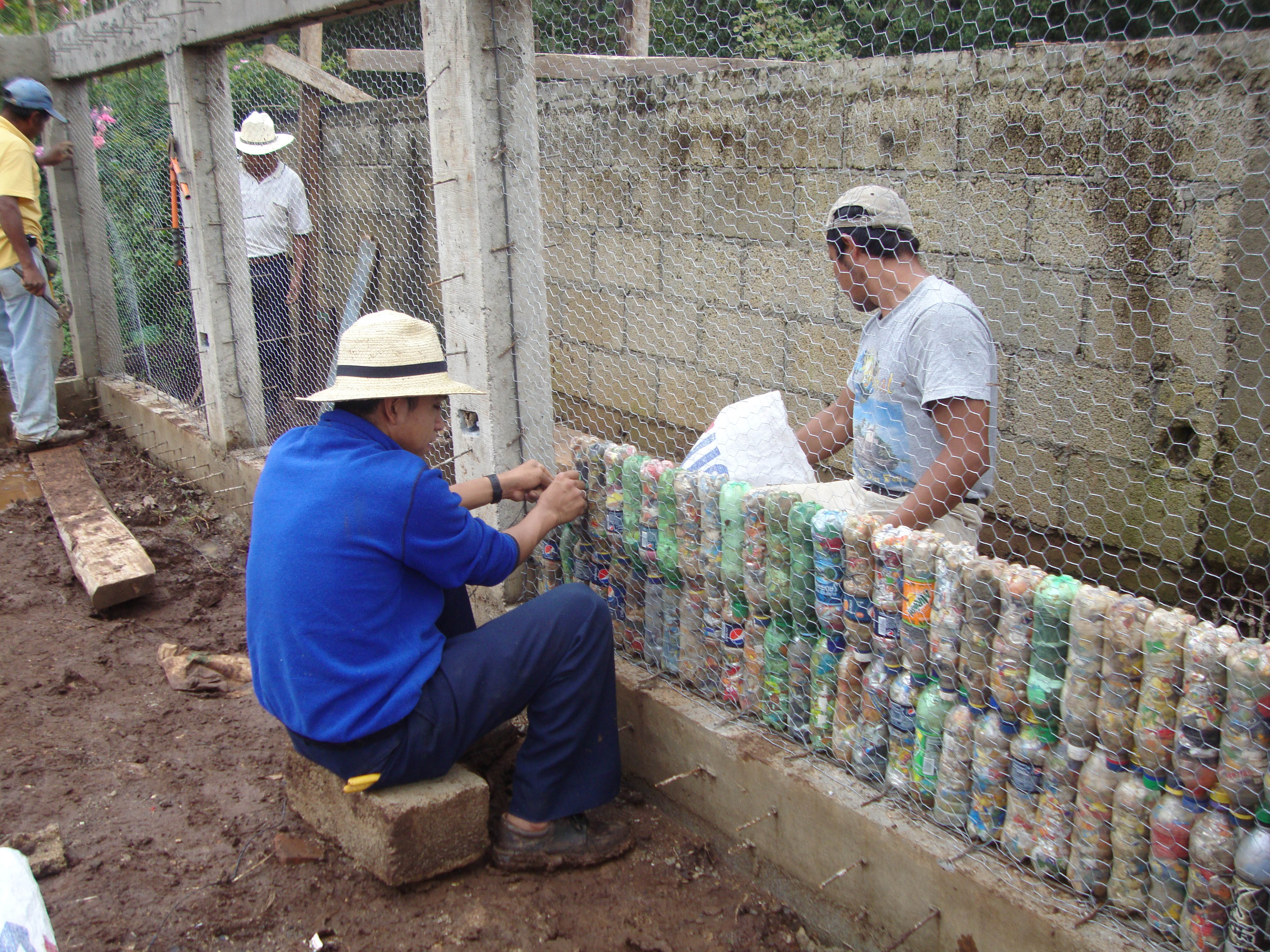


- What can we tell from the pictures?
Engineering Design Principles with Cubelets, Design Thinking
Educator Pack Cubelets
Introduction to Engineering Principles for the day:
Often Engineers need to consider who will use the solutions they make and design. If the problem was “what should we have for dinner” and the solution was “a salad with chicken, almonds, and cucumbers” it wouldn’t be a good solution if the people eating the dinner were allergic to nuts. The end user is who’s going to eat the dinner, and this solution doesn’t work for them. In the design phase of engineering we will:
- Define what the problem is
- Propose solutions to build, keeping in mind any constraints or user requirements
- Ask, “Is it successful” by looking at who is using it, and how it’s being used
We’ll consider how different users might use the same thing differently, or might need different solutions altogether. We’ll also consider how designing solutions should take into account who will use the solution, and how they will use it. Today our job as engineers is thinking about designing our solutions to solve more than one problem. We’ll have to ask who we’re helping, what to make, but also consider if we can anticipate how this design will be used over time ‐ will it need to change and adjust? Will it respect constraints and be used as intended? Let’s think more about this.
Understanding Design Thinking
Materials: Read through and present examples from //www.inspirationgreen.com/plasticbottleschools.html


We use the Bottle School example as a starting place to think about users’ different needs and user‐experiences and resultant different requirements for what makes a design a success.
Welcome back, Engineers!
Today we’re going to talk about how engineers can design devices, processes, robots, spaceships, biological and chemical substances, bridges, buildings, and much more but must always keep in mind how people will use them. Making good solutions means starting and ending your design by considering who the end‐user will be, and what their needs are. Let’s practice this by thinking through an example of innovative building design ‐ building a special school with and for those who will use it.

In the Philippines, there is a shortage of schools. Pepsi organized a team of engineers and local volunteers to build this school. You might be interested to know what it’s made out of ‐ can you see? Soda Bottles! Many Soda bottles were collected, filled with clay, fitted, and cemented together to make the walls of this school. Let’s look at the pictures and discuss these questions:
Finally, let’s explore another part of the story. Bottle schools were also built in Guatemala . . . Let’s think again about how designing and building a solution like this with an end‐user or group of users in mind involves all the parts of Engineering we’ve already practiced, now also keeping in mind ‘Who will use this? What do we need to know about how they will use it to design for their needs?'

Let’s think through these questions:


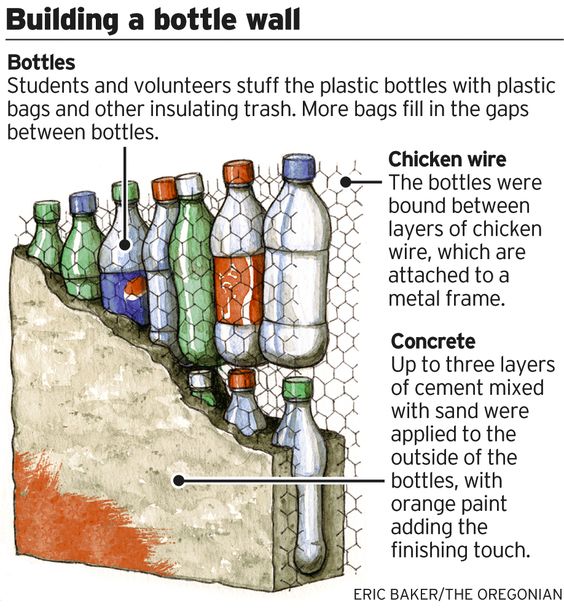
Teaching Tips:
Practicing Design with Cubelets
Materials: Educator Pack of Cubelets. with robots from Engineering Design Principles Day 1 already built
Students now practice design thinking by re‐considering some familiar Cubelets robots.
Introduce students to Design Thinking with Cubelets:
Tell the class: “Today, we’ll be building a robot that can do a job for an end‐user. It will be important to plan ahead, design on paper before we build, thinking about who will use it and how they’ll use it. Only then can you build, and test your design. We’ll keep asking:
- What’s the problem and how can we define it?
- Who will use it, and what do we need to know about them to design for them?
- What can we make that will solve this problem?
- How will we know our solution succeeded?
Let’s look at some of these robots you worked to design as solutions in lesson 1 ‐ for each of these, ask yourself:
- What problem does this solve?
- How does it work?
- Who can use this? How will they use it?
/IMG_1512.jpg)
/IMG_1521.jpg)
/IMG_1481.jpg)
/IMG_1482.jpg)
What problem does this solve? Getting us out of a dark room, working around the “no flashlight constraint.
How does it work? The distance sensor detects closeness of objects, like walls and tables, and sends that as a number to the speaker, so it beeps faster when it gets close to something, and slower when it’s not close to objects
Who can use this? Not just people from our story, trapped in a dark place, what kinds of users or professions might use this? Blind users could use this. Coal Miners in caves. Search and Rescue professionals.
Finally ‐ how can we optimize it for one of these users? Can you suggest design improvements that makes this a more optimal robot for one of those users?
"Now I’m going to break you up into groups and you’re going to work on these four design tasks questions with your robot.”
/IMG_1530.jpg)
/IMG_1531.jpg)
- Security light ‐ Can you add an alarm to wake you up? What about making it drive off when someone gets close?
- Smart Flashlight ‐ If you add drive Actions it makes a rover that can light your way
- Rotating server ‐ Adding passives could better to hold a plate!
- Freezer alarm ‐ What about a visual indicator like the Bar Graph?
Practicing Design with Cubelets
Materials: Educator Pack of Cubelets. with robots from Engineering Design Principles Day 1 already built
You will now practice design thinking by re‐considering some familiar Cubelets robots.
Introduction to Design Thinking with Cubelets:
Today, we’ll be building a robot that can do a job for an end‐user. It will be important to plan ahead, and design on paper before we build, thinking about who will use it and how they’ll use it. Only then can you build, and test your design. We’ll keep asking:
- What’s the problem and how can we define it?
- Who will use it, and what do we need to know about them to design for them?
- What can we make that will solve this problem?
- How will we know our solution succeeded?
Let’s look at some of these robots you worked to design as solutions in the previous lesson - for each of these, ask yourself:
- What problem does this solve?
- How does it work?
- Who can use this? How will they use it?
/IMG_1512.jpg)
/IMG_1521.jpg)
/IMG_1481.jpg)
/IMG_1482.jpg)
Example: Wall detector. We had a constraint when we made this robot ‐ we weren’t able to use a flashlight action.
What problem does this solve?
Getting us out of a dark room, working around the “no flashlight constraint"
How does it work?
The distance sensor detects closeness of objects, like walls and tables, and sends that as a number to the speaker, so it beeps faster when it gets close to something, and slower when it’s not close to objects
Who can use this?
Not just people from our story, trapped in a dark place, blind users could use this. Coal Miners in caves. Search and Rescue professionals.
Finally ‐ how can we optimize it for one of these users? Can you suggest design improvements that makes this a more optimal robot for one of those users?
Now you’re going to work on these four design tasks questions with your robot.
/IMG_1530.jpg)
/IMG_1531.jpg)
Teaching Tips:
This can be used to facilitate students thinking through the engineering scenarios.
| Mechanical ‐ mechanical engineers make machines like cars, toys, robots, and wind turbines. These engineers might be Industrial, Materials, or Aerospace Engineers. | Civil ‐ These are engineers that work to plan structures and systems of structures like buildings, highways, airports, and bridges. This type of engineer might work as an Architect, City Planner, or work in transportation. |
| Electrical and Software ‐ This includes people who design and make electronics and computers, but also engineers that write and implement programs to run computers and devices. This may also include engineers who work to harness energy in innovative ways. | Chemical and Biological ‐ Chemical engineers design chemicals that help us to clean, keep things safe, make food, or medicine. Biological engineering includes creating medical solutions, agricultural solutions, like how to improve farming practices and food products. This category could also include environmental engineers working to make energy, buildings, and cities more sustainable. |
For each story, answer the following questions:
- First What is the problem? What situation would we like the change?
- Second What kinds of solutions could make this better? What could we make that would change this situation?
- Third When we try our solution ‐ how well does it work? How do we know if this solution was successful?
Let's use to practice your design thinking through the engineering scenarios.
Read each scenario below and pick one in which you are most interested.
| Mechanical ‐ mechanical engineers make machines like cars, toys, robots, and wind turbines. These engineers might be Industrial, Materials, or Aerospace Engineers. | Civil ‐ These are engineers that work to plan structures and systems of structures like buildings, highways, airports, and bridges. This type of engineer might work as an Architect, City Planner, or work in transportation. |
| Electrical and Software ‐ This includes people who design and make electronics and computers, but also engineers that write and implement programs to run computers and devices. This may also include engineers who work to harness energy in innovative ways. | Chemical and Biological ‐ Chemical engineers design chemicals that help us to clean, keep things safe, make food, or medicine. Biological engineering includes creating medical solutions, agricultural solutions, like how to improve farming practices and food products. This category could also include environmental engineers working to make energy, buildings, and cities more sustainable. |
Teaching Tips:

